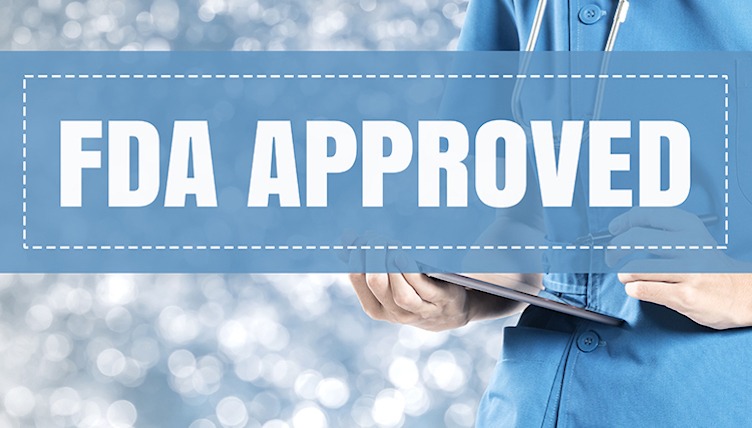New Drug Approvals Reached 21-Year High in 2017
The US Food and Drug Administration (FDA) approved 46 new molecular entities (NMEs) in 2017, more than double the number approved in 2016 and a 21-year high. So which drugs made the mark?
Following a downturn in 2016 when only 22 NME were approved, new drug approvals in 2017 outpaced a recent high of 45 NME approvals in 2015 and was the second highest total since 1996.
Inside NME approvals in 2017
The year 2017 was a banner year for approvals of new molecular entities (NMEs) by the US Food and Drug Administration’s (FDA) Center for Drug Evaluation and Research (CDER). In 2017, the FDA approved 46 NMEs (see Table I at end of article) compared to 22 NMEs (20 new drugs and two new diagnostic/imaging agents) in all of 2016. The 46 NME approvals in 2017 is the second highest number of NME approved by FDA’s CDER, second only to the 53 NMEs approved in 1996. The uptick in NME approvals in 2017 resumes an upward trajectory beginning in 2011 (with the exception of 2013) for NME approvals with 30 NMEs approved in 2011 and 39 in 2012. The exception was in 2013, which had a decline to 27 NMEs, but levels jumped again to 41 NMEs approved in 2014 and in 2015 when 45 NMEs were approved.
Small molecules versus biologics
In looking at the 46 NME approvals by FDA’s CDER (see Table I at end of article ), 34 or 74% were small molecules and 12 or 26% were biologics. The nearly quarter of NME approvals that were biologics were slightly down from recent product mix for NME approvals. In 2016, 32% of the NME approvals were biologics, and in 2015 and 2014, 27% of NME approvals were biologics (see Table II at end of article ).
Also in 2017, FDA’s Center for Biologics Evaluation and Research (CBER) approved two cell-based gene therapies. Novartis’ Kymriah (tisagenlecleucel), a chimeric antigen receptor T-cell (CAR-T) therapy, was approved in August 2017, marking the first CAR-T therapy approved by the FDA. The therapy was approved for treating certain pediatric and young adult patients with a form of acute lymphoblastic leukemia. Each dose of Kymriah is a customized treatment created using an individual patient’s own T-cells, a type of white blood cell known as a lymphocyte. The patient’s T-cells are collected and sent to a manufacturing center where they are genetically modified to include a new gene that contains a specific protein (a chimeric antigen receptor or CAR) that directs the T-cells to target and kill leukemia cells that have a specific antigen (CD19) on the surface. Once the cells are modified, they are infused back into the patient to kill the cancer cells.
A second CAR-T therapy was approved by FDA’s CBER in October 2017 with the approval of Gilead Sciences’ Yescarta (axicabtagene ciloleucel) for treating patients with large-B-cell lymphomas whose cancer has progressed after receiving at least two prior treatment regimens. Kite Pharma, the developer of Yescarta, was acquired by Gilead Sciences in October 2017 for $11.9 billion.
Leaders in NME approvals
Among the large pharmaceutical companies, AstraZeneca led with 3 NME approvals as did Pfizer (through two co-developed products with Merck & Co. and Merck KGaA and one Pfizer only product) and five companies (Merck & Co., Novartis, Roche, Sanofi and Valeant Pharmaceuticals) each had 2 NME approvals. Nine large pharma companies (AbbVie, Amgen, Bayer, Eli Lilly and Company, Gilead Sciences, Johnson & Johnson, Novo Nordisk, Takeda, and Teva Pharmaceutical Industries) each had 1 NME approval each (see Table 1 at the end of the article).
Blockbuster potential
Several NMEs approved in 2017 are projected by some analysts as future blockbusters (defined as drugs with sales of $1 billion) by 2021. They include: AstraZeneca’s Imfinzi (durvalumab) for treating bladder cancer; Merck Serono’s and Pfizer’s Bavencio (avelumab) for treating a rare form of skin cancer; Novartis’ Kasqali (ribociclib) for treating breast cancer; Roche’s Ocrevus (ocrelizumab) for treating multiple sclerosis (MS); Sanofi’s and Regeneron Pharmaceuticals’ Dupixent (dupilumab) for treating a common form of eczema; and Tesaro’s Zejula (niraparib) for treating ovarian cancer.
AstraZeneca’s Imfinzi (durvalumab). AstraZeneca’s PD-L1 antibody, durvalumab, was approved by the FDA for treating bladder cancer. A 2017 analysis by Clarivate Analytics points out that while the drug will provide a meaningful treatment option in the bladder cancer setting, it is in lung cancer where the most notable sales are expected. Additional clinical data in non-small-cell lung cancer is expected, which could set the stage for a filing in that indication and potentially offering a competitive alternative to other immunotherapies: Bristol-Myers Squibb’s Opdivo (nivolumab) and Merck & Co.’s Keytruda (pembrolizumab). Projected 2021 sales are $2.0 billion.
Merck Serono’s and Pfizer’s Bavencio (avelumab). Merck KGaA’s and Pfizer’s Bavencio (avelumab) is a fully human anti-PDL1 antibody expected to enter the market in the third quarter of 2017 in its first cancer setting of second-line metastatic Merkel cell carcinoma, a rare form of skin cancer, for which it received FDA approval in March 2017. Avelumab is part of the immunotherapy alliance that Pfizer and Merck KGaA formed in November 2014 under which the companies are collaborating on up to 20 high priority immuno-oncology clinical development programs, including combination trials. The clinical development program for avelumab involves study of more than 15 tumor types, including breast cancer, gastric/gastroesophageal cancer, head and neck cancer, Merkel cell carcinoma (an aggressive form of skin cancer), mesothelioma, melanoma, non-small cell lung cancer, ovarian cancer, renal cell carcinoma, and urothelial (e.g. bladder) cancer. Phase III clinical trials for ovarian cancer are ongoing with data expected in 2018 for 2019. Forecast 2021 sales are $1.2 billion, according to Clarivate.
Novartis’ Kisqali (ribociclib). Novartis’ Kisqali (ribociclib) is another drug approved in 2017 with potential blockbuster status. It is a highly selective CDK4/CDK6 inhibitor, which was approved by the FDA for treating HR-positive, HER2-negative first-line breast cancer. The drug will compete with Pfizer’s CDK4/6 inhibitor, Ibrance (palbociclib), a strong competitor and earlier market entry that was launched in early 2015. Forecasts for 2021 for the drug are nearly $1.3 billion, according to the Clarivate analysis.
Roche’s Ocrevus (ocrelizumab). Roche’s Ocrevus (ocrelizumab) is expected to materially disrupt the MS market, according to a recent analysis by Clarivate Analytics in analyzing future blockbusters. Ocrevus is a first-in-class anti-CD20 antibody, and it showed positive results in reducing the annualized relapse rate in MS and is the first drug to prove effective in primary progressive MS. The Clarivate report points out that initial market share gains are likely in the second line behind oral options and in severe patients on Biogen’s Tysabri (natalizumab) who are at risk of progressive multifocal leukoencephaolopathy, but adoption in naive patients may be expected in the medium term as prescriber familiarity builds. Clarivate projects 2021 sales of $3.3 billion.
Sanofi’s and Regeneron Pharmaceuticals’ Dupixent (dupilumab). Sanofi’s and Regeneron Pharmaceuticals’ Dupixent (dupilumab) is a human monoclonal antibody that is designed to specifically inhibit overactive signaling of two key proteins, IL-4 and IL-13, which are believed to be major drivers of the persistent underlying inflammation in atopic dermatitis (AD), a common form of eczema. The drug was approved by the FDA in March 2017 for treating moderate-to-severe AD whose disease is not adequately controlled with topical prescription therapies, or when those therapies are not advisable. Clarivate projects 2021 sales of $2.8 billion.
Tesaro’s Zejula (niraparib). Tesaro’s Zejula (niraparib), an oral, once-daily poly(ADP-ribose) polymerase (PARP) inhibitor, was approved in 2017 for the maintenance treatment of women with recurrent epithelial ovarian, fallopian tube or primary peritoneal cancer who are in a complete or partial response to platinum-based chemotherapy. Projected 2021 sales are nearly $1.1 billion.
Table I (see below) outlines the 46 NME approvals in 2017, and Table II (see below) shows the product mix of NME approvals between small molecules and biologics from 2010 to 2017 thus far.
| Table I: Approvals of New Molecular Entities (New Drug Applications (NDAs) and Original Biologics License Applications (BLAs) in 2017 by the US Food and Drug Administration’s Center for Drug Evaluation and Research. | ||
| Company | Brand name (active ingredient); application type | Indication |
| AbbVie | Mavyret (glecaprevir and pibrentasvir); NDA | Chronic hepatitis C virus genotypes 1-6 without cirrhosis or with mild cirrhosis |
| Aerie Pharmaceuticals | Rhopressa (netarsudil); NDA | Glaucoma or ocular hypertension |
| Aeterna Zentaris | Macrilen (macimorelin acetate); NDA | Diagnosis of adult growth hormone deficiency |
| Amgen | Parsabiv (etelcalcetide); NDA | Secondary hyperparathyroidism in adult patients with chronic kidney disease on hemodialysis |
| AstraZeneca | Imfinzi (durvalumab); BLA | Locally advanced or metastatic urothelial carcinoma (bladder cancer) |
| AstraZeneca | Calquence (acalabrutinib); NDA | Mantle-cell lymphoma |
| AstraZeneca AB | Fasenra (benralizumab); BLA | Add-on maintenance treatment of patients with severe asthma |
| Bayer | Aliqopa (copanlisib); NDA | Relapsed follicular lymphoma |
| BioMarin Pharmaceutical | Brineura (cerliponase alfa); BLA | A specific form of Batten disease |
| Celgene | Idhifa (enasidenib); NDA | Relapsed or refractory acute myeloid leukemia in patients with a specific genetic mutation |
| Chemo Research | benznidazole; NDA | Chagas disease |
| Eli Lilly and Company | Verzenio (abemaciclib); NDA | Certain advanced or metastatic breast cancers |
| Ferrer Internacional | Xepi (ozenoxacin); NDA | Impetigo (i.e., skin sores) |
| Gilead Sciences | Vosevi (sofosbuvir, velpatasvir, and voxilaprevir); NDA | Chronic hepatitis C virus, genotypes 1-6 without cirrhosis or with mild cirrhosis |
| Johnson & Johnson (Janssen Biotech) | Tremfya (guselkumab); BLA | Moderate-to-severe plaque psoriasis |
| La Jolla Pharmaceutical Company | Giapreza (angiotensin II); NDA | Increase blood pressure in adults with septic or other distributive shock |
| Lexicon Pharmaceuticals | Xermelo (telotristat ethyl); NDA | Carcinoid syndrome diarrhea |
| Lupin | Solosec (secnidazole); NDA | Bacterial vaginosis |
| Melinta Therapeutics | Baxdela (delafloxacin); NDA | Acute bacterial skin infections |
| Merck & Co. | Prevymis (letermovir); NDA | To prevent infection after bone marrow transplant |
| Merck & Co. and Pfizer | Steglatro (ertugliflozin); NDA | Glycemic control in adults with Type 2 diabetes mellitus |
| Merck KGaA and Pfizer | Bavencio (avelumab); BLA | Metastatic Merkel -cell carcinoma (a rare form of skin cancer) |
| Mitsubishi Tanabe Pharma America | Radicava (edaravone); NDA | Amyotrophic lateral sclerosis (Lou Gehrig’s disease) |
| Neurocrine Biosciences | Ingrezza (valbenazine); NDA | Tardive dyskinesia |
| Novartis | Kisqali (ribociclib); NDA | Hormone receptor-positive, human epidermal growth factor receptor 2 (HER2)-negative advanced or metastatic breast cancer |
| Novartis | Rydapt (midostaurin); NDA | Acute myeloid leukemia in patients with a specific genetic mutation, FLT3, in combination with chemotherapy |
| Novo Nordisk | Ozempic (semaglutide); NDA | Glycemic control |
| Pfizer | Besponsa (inotuzumab ozogamicin); BLA | Relapsed or refractory B-cell precursor acute lymphoblastic leukemia |
| Portola Pharmaceuticals | Bevyxxa (betrixaban); NDA | Prophylaxis of venous thromboembolism |
| PTC Therapeutics | Emflaza (deflazacort); NDA | Duchenne muscular dystrophy |
| Puma Biotechnology | Nerlynx (neratinib); NDA | Extended adjuvant treatment of early-stage, HER2-positive breast cancer |
| Radius Health | Tymlos (abaloparatide); NDA | Osteoporosis |
| Roche | Ocrevus (ocrelizumab); BLA | Relapsing forms of multiple sclerosis and primary progressive multiple sclerosis |
| Roche | Hemlibra (emicizumab); BLA | To reduce the frequency of bleeding episodes in adult and pediatric patients with hemophilia A who have developed antibodies called Factor VIII (FVIII) inhibitors |
| Sanofi and Regeneron Pharmaceuticals | Dupixent (dupilumab); BLA | Moderate-to-severe eczema (atopic dermatitis) |
| Sanofi | Kevzara (sarilumab); BLA | Rheumatoid arthritis |
| Shionogi | Symproic (naldemedine); NDA | Opioid-induced constipation in adult patients with chronic non-cancer pain |
| Synergy Pharmaceuticals | Trulance (plecanatide); NDA | Chronic idiopathic constipation |
| Takeda Pharmaceutical | Alunbrig (brigatinib); NDA | Anaplastic lymphoma kinase (ALK)-positive metastatic non-small cell lung cancer |
| Tesaro | Zejula (niraparib); NDA | Epithelial ovarian, fallopian tube or primary peritoneal cancer |
| Teva Pharmaceuticals | Austedo (deutetrabenazine); NDA | Chorea associated with Huntington’s disease |
| The Medicines Company | Vabomere (meropenem and vaborbactam); NDA | Complicated urinary tract infections |
| Ultragenyx Pharm | Mepsevii (vestronidase alfa-vjbk); BLA | Sly syndrome |
| US World Meds | Xadago (safinamide); NDA | An add-on treatment for patients with Parkinson’s disease |
| Valeant Pharmaceuticals | Vyzulta (latanoprostene bunod ophthalmic solution); NDA | Intraocular pressure in patients with open-angle glaucoma or ocular hypertension |
| Valeant Pharmaceuticals | Siliq (brodalumab); BLA | Moderate-to-severe plaque psoriasis |
|
Lupin acquired Symbiomix, the developer of Solosec (secnidazole), in October 2017. . PTC Therapeutic acquired rights to Emflaza (deflazacort) for the treatment of Duchenne muscular dystrophy in the US from Marathon Pharmaceuticals in April 2017. Takeda acquired Ariad Pharmaceuticals in February 2017. The Medicines Company acquired Rempex Pharmaceuticals in 2013. US WorldMed is partnered with Zambon, which is partnered with Newron Pharmaceuticals by which Zambon has the rights to develop and commercialize Xadago (safinamide) globally, excluding Japan and other key territories where Meiji Seika has the rights to develop and commercialize the compound. The rights to develop and commercialize Xadago in the US have been granted to US WorldMeds by Zambon. Source: US Food and Drug Administration’s Center for Drug Evaluation and Research and company information. |
||
| Table II: Small Molecule and Biologics New Molecular Entities Approved by the US Food and Drug Administration’s Center for Drug Evaluation and Research, 2010 to 2017. | ||
| Year | Number of New Molecular Entities (NMEs) Approved | Percentage relative to total NME approvals and number of small molecules and biologics approved as NMEs |
| 2010 | 21 NMEs approved | 71% small molecules (15 NMEs) 29% biologics (6 NMEs) |
| 2011 | 30 NMEs approved | 77% small molecules (23 NMEs) 20% biologics (6 NMEs) Plus 1 NME radioactive diagnostic imaging agent* |
| 2012 | 39 NMEs approved |
79% small molecules (31 NMEs) |
| 2013 | 27 NMEs approved | 81% small molecules (22 NMEs) 11% biologics (3 NMEs) Plus 2 NME radioactive imaging agents*** |
| 2014 | 41 NMEs approved | 71% small molecules (29 NMEs) 27% biologics (11 NMEs) Plus 1 NME radioactive diagnostic imaging agent**** |
| 2015 | 45 NMEs approved* | 71% small molecules (32 NMEs) and 1 insulin analog NME approved as a new drug application***** 27% biologics (12 NMEs) |
| 2016 | 22 NMEs approved** | 59% small molecules (13 NMEs) 32% biologics (7 NMEs) Plus 2 NME radioactive diagnostic imaging agents****** |
| 2017 | 46 NMEs approved | 74% small molecules (34 NMEs) 26% biologics (12 NMEs) |
|
*In 2011, 23 small-molecule drugs and 1 radioactive diagnostic imaging were approved as new drug applications (NDAs). **In 2012, 31 small-molecule drugs and 2 radioactive diagnostic imaging agents were approved as NDAs ***In 2013, 22 small-molecule drugs and 2 radioactive diagnostic imaging agents were approved as NDAs T****In 2014, 29 small-molecule drugs and 1 radioactive diagnostic imaging agent were approved as NDAs . *****In 2015, 32 small-molecule drugs were approved as NDAs and one insulin analog, Novo Nordisk’s Tresiba (insulin degludec injection), a long-acting basal human insulin analog produced by a process that includes expression of recombinant DNA in Saccharomyces cerevisiae followed by chemical modification was approved as a NDA, not as a biologics license application. ******In 2016, 13 small-molecule drugs and 2 diagnostic imaging agents were approved as NDAs. Source: US Food and Drug Administration’s Center for Drug Evaluation and Research and company information. |
||





